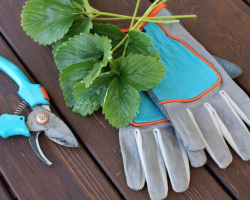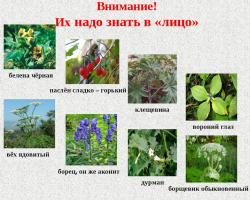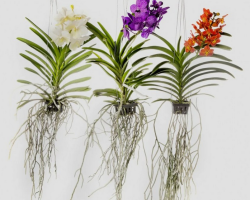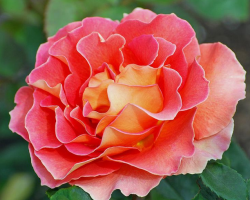How to distinguish a lover from celery? Or maybe this is generally one plant? Let's talk about this in this article.
Content
Lovelist and celery is the same or not? This question is interested in many summer residents, gardeners and lovers of cooking. It is possible to confuse that it has grown on the site, a lover or celery, because of their similar carved leaves and because of the inflorescences in which small white flowers are folded into round umbrellas. Both a lover and celery belong to the family of umbrella plants. But, perhaps, this is all that is common between two plants.
Lovelife and celery are different plants, and they are very different in taste. Celery is widely used in cooking. And the lover of the cook is used only in microdoses, it tastes very sharp. It is more used in folk medicine.
Determine the lover or celery by the size of plants
To determine that in front of you is a lover or celery, you can often at first glance. The size of the bush is essential.
- Celery is a two -year plant. It always grows only to the size of a small bush, and usually no more than 40 centimeters in height. Although in some cases, celery can grow to a meter (this is in the second year along with inflorescences).
It can be difficult to distinguish celery from a lover, because celery exist more than 300 species. All these types have different stems and leaves. Some varieties of celery are very similar to a young lover. But celery never grows up as large as a lover. A little young lover is useful, like celery.

- If you have a large, magnificent and sprawling bush with leaves similar to celery, then this is a lover. Lovelist perennial. It can grow for decades in one place. The height of the old bush of a lover is usually more than 70 centimeters. And its diameter is often more than half a meter. The bush of a lover consists of a row of tubular stems standing nearby.
The literature on plants claims that a lover can reach two meters in height. We ourselves did not have to see such bushes, but the fact that they are such a size willingly believe.
The problem to determine that you, a lover or celery, occurs only when a lover is still small and really looks like celery. Ground -up - a lover is huge. And when it blooms, it releases arrows with white umbrellas.
Lovelist and celery - Photo of differences:

The taste of the lover
It is impossible to say that a lover and celery is one and the same. From celery you can make a fresh, and drink it a whole glass. Anyone who has tasted a lover at least once will say that it is impossible to grind and swallow so many a lover. The taste of a lover is an unforgettably sharp. An exception can be called only the youngest shoots in early spring.
A lover grows everywhere in Ukraine, in the Kuban and in all the expanses of South-West Russia. Tearing a leaf of a lover, you will feel a fresh, somewhat similar to a mint aroma, but it will be at the same time sweet and spicy. I want to try my lover.
But the one who decides to do this is unlikely to say that the lover and celery are the same. The lover tastes disgusting. He is very bitter. And volatile substances, for a long time leave this sugary sweet bitterness in the mouth. From a tasting, a lover can even start to dizzy and hurt a head.

A lover is contraindicated in pregnant women, although used in limited doses in folk medicine. It includes a plant poison - coumarin. This poison is not very powerful, and even in some areas, far from food, useful to people. It is Kumarin that is a substance that makes the smell of expensive spirits strong and persistent. Pregnant, young children and weakened people often have poor health from the pungent smell of spirits and from a love of love of a lover.
If you eat a lot of kumarin, then you can even get to the hospital with serious poisoning. But from one or two leaflets, the lover is unlikely to be any consequences. And you cannot eat more mature plants because of its unpleasant taste.
If you ate young shoots of a lover, then do not worry, this will not do serious harm. The rule works here that if you could swallow it, you are unlikely to have serious poisoning. Although a slight malaise is possible.
In cooking It cannot be said that a lover and celery is the same. A lover is used only in a very small amount in the form of essential oil, or only its youngest spring shoots are taken.
- A lover of essential oil is used as a flavor. In total, a drop of oil is able to give the dish a fresh smell, which resembles either the smell of beveled grass or the aroma of mushrooms.
- Young shoots of the lovie are crushed and added to the "green oil" along with dill and other herbs.
- Sometimes a little lover is added to canned food. He gives them an interesting taste.

Lover, like a medicinal plant
On the Web you can find many materials that a lover is a panacea from all diseases. But if you pick up the Soviet reference book on herbal medicine, it will be written that lover was not harvested in the Soviet Union, like a medicinal plant. It was used only in folk medicine. Probably, Soviet scientists considered the properties of a lover very contradictory.
In folk medicine, a lover was used with special precautions:
- The root of the lover helps to get rid of adults from bronchitis. Until flowering, the roots of the lovie were not harvested, they were considered poisonous.
- Young shoots in the old days were given to children. This was considered prevention helminthic invasion.
- Drowned lover - excellent remedy for edema With renal and heart failure. It can help somewhat with dropsy due to cirrhosis. But pregnant women, who also often have swelling, the plant is strictly contraindicated.
- The lover has wind -bearing effect. This means that it helps to get rid of bloating and unnecessary gas formation. But young children should not give it.
- The lovage is categorically contraindicated for those who have the possibility of bleeding.
- The plant is shown and as a sedative. It can reduce anxiety, get rid of depression and insomnia.
A lover is able to cloud consciousness. In small quantities, it acts like a small dose of alcohol. In the old days, a lover was used in witchcraft love potions, which could be encouraged by the desired man. In large quantities, kumarin can cause even hallucinations. Historical sources say that some shamans achieved just such an effect from this poison.

The taste of celery
It is necessary to think that in front of you is a lover or celery, if we are talking about stem celery. There are three types of celery, and in each of these three species, only one part of the plant grows tasty and edible: roots, stems or leaves. It’s difficult to confuse root celery and lover. Such a celery has no thick stems, like a lover and generally modest greens.
There are 3 types of celery:
- Root. Such a plant has a delicious root. It is quite spicy raw, and in this form it is not eaten. The boiled and stewed celery root tastes something like potatoes. The upper greens of such a celery are usually modest and not at all tasty.
- Cherry (stalk) celery - Perhaps the most popular. This celery is not a delicious root, and the leaves are also quite sharp in taste. But he has very juicy and thick stems. It is about this celery that can be easy to think that loving and celery is the same. The cherry celery is the most delicate in taste. It can be added to the vegetable salad.
- Leaf celery It looks like a parsley, only with a more pronounced taste. Celery is more bitter and spicy. Such celery is used in small quantities as greens, it is added to salads, soups, and meat dishes.
To derive a celery variety, which would have not yet been delicious, has not yet been possible. But breeders are working on it.

Useful and therapeutic properties of celery
Celery is not a medicine, but a food product. But it is interesting that for the healing properties of love of love and celery the same thing.
The poisonous kumarin, unlike a lover, was not found in celery.
Celery is a related love of a plant. But we can say that it is more “soft” both in taste and the content of certain substances. The Soviet reference books say that celery, like a lover, was not harvested in the USSR on an industrial scale, like medicinal raw materials. And also, that all chemicals that are included in celery are unknown and unexplored so far.
Celery is attributed to many healing properties:
- Celery has a strong diuretic effect.
- Lovelife and celery are the same, and in terms of choleretic effect. These plants help people with liver dysfunction.
Nutritionists even warn that if you drink celery juice with glasses, this can lead to the fact that stones will begin to come out of the kidneys and liver. This causes acute pain, and if the pebble stucks, it can even end in an operation. Therefore, before using celery in large quantities, it is better to make an ultrasound of these organs, and make sure that you have no stones.

- Celery contains a substance that helps destroy single cancer cells. It is recommended to be used by cancer patients, but only as an addition to the main treatment. The same properties are attributed to a love of love.
- Celery in large quantities, like a lover, is contraindicated in pregnant women.
- And with regular use of celery, it prevents allergies.
You can determine which plant in front of you can be a lover or celery by appearance (after all, a lover is a large perennial plant) and in taste. If you are delicious, there are stems or greens - then you are dealing with celery or with a very young love of. Both of these plants are equally useful and similar in chemical composition.







